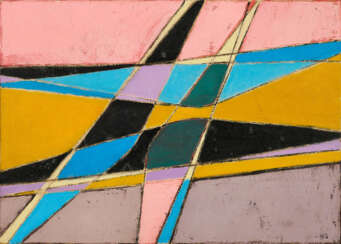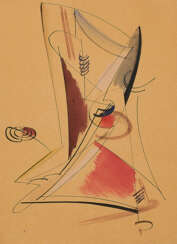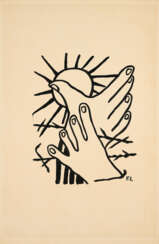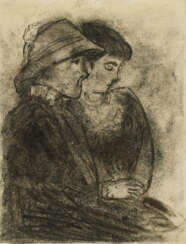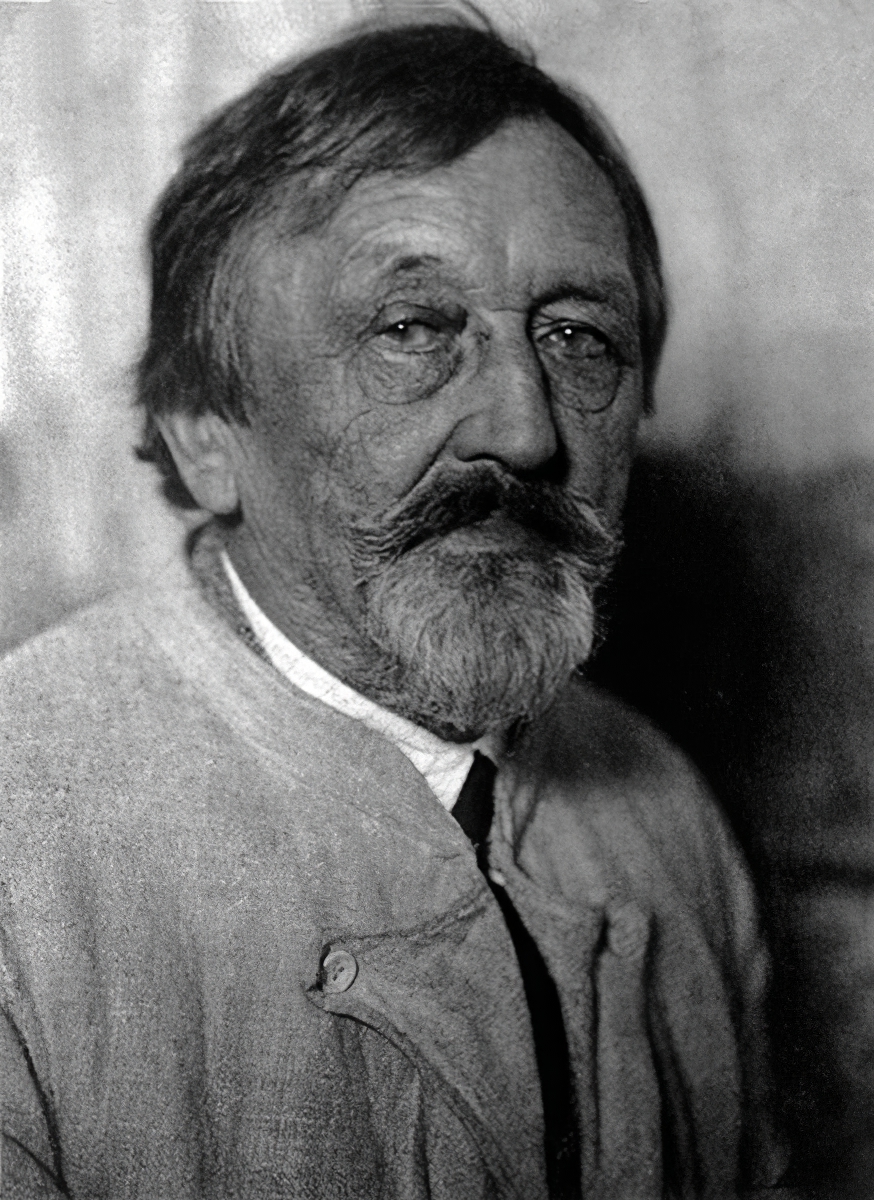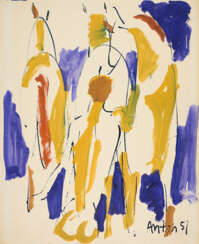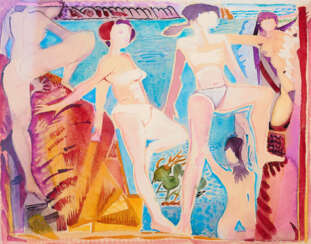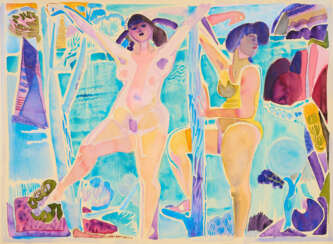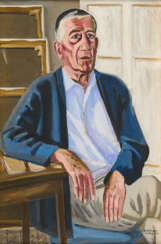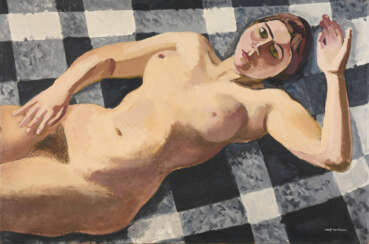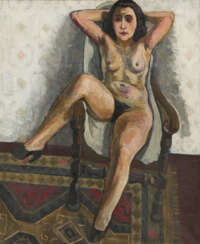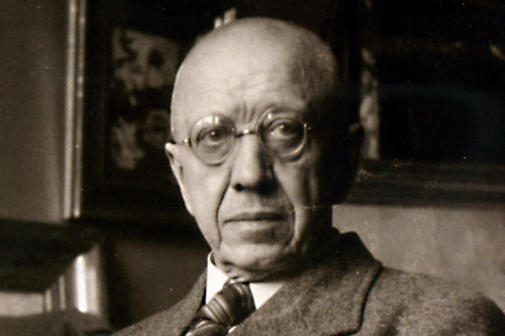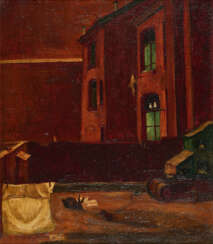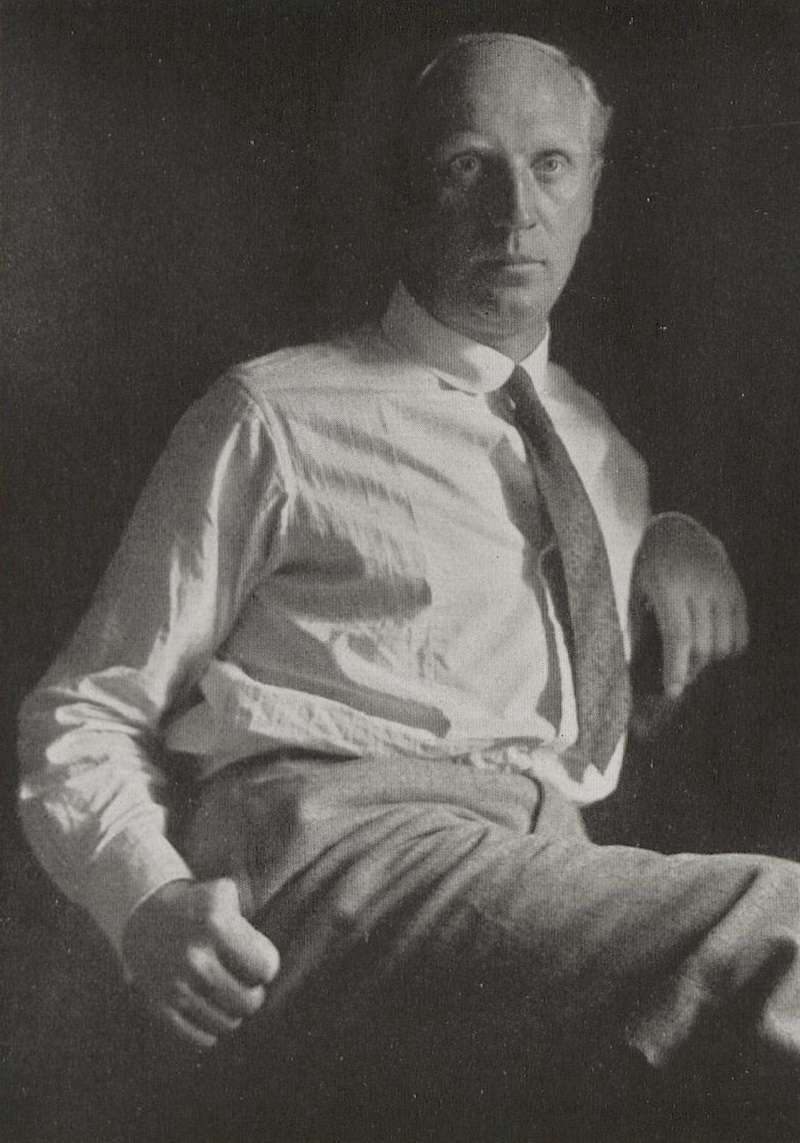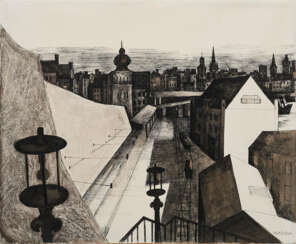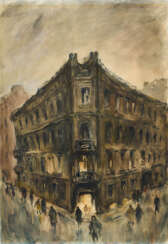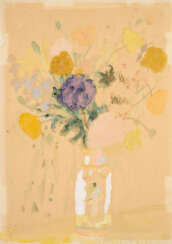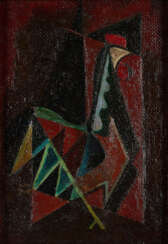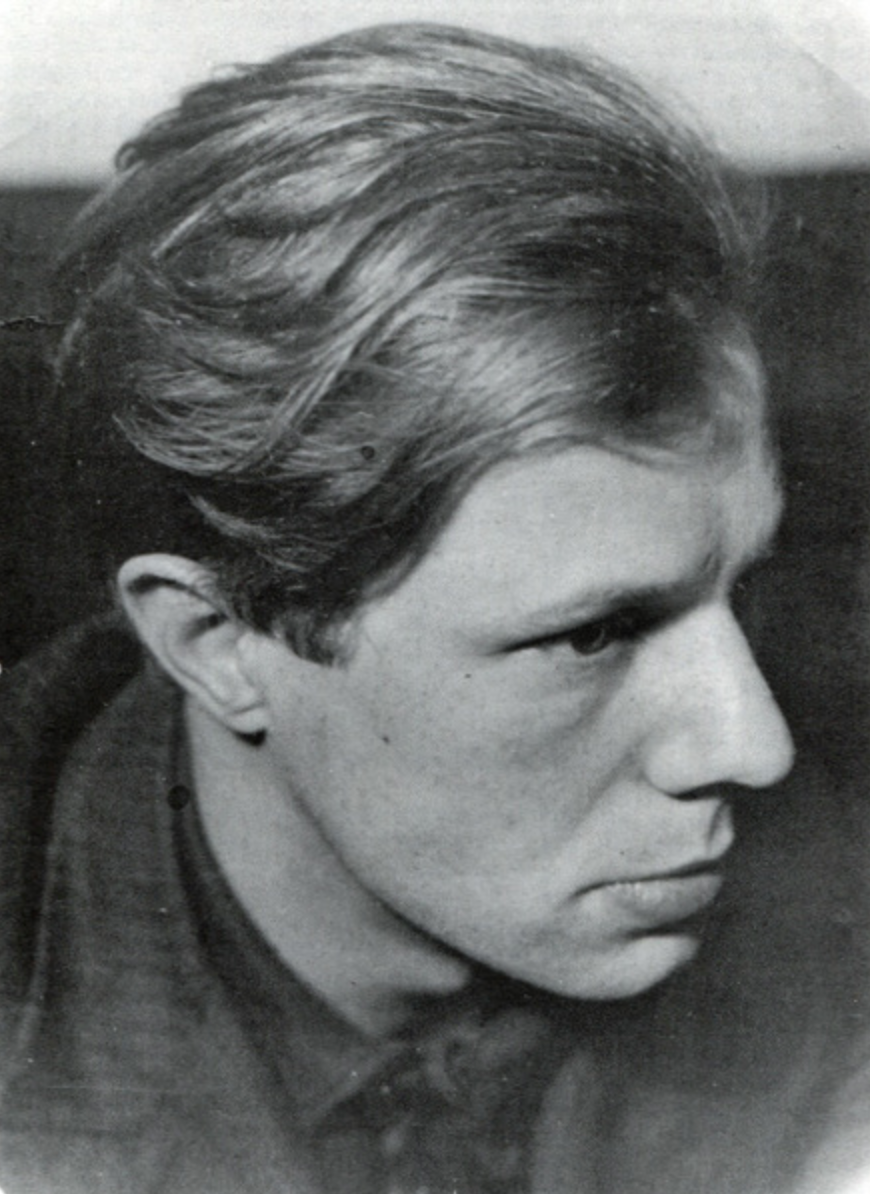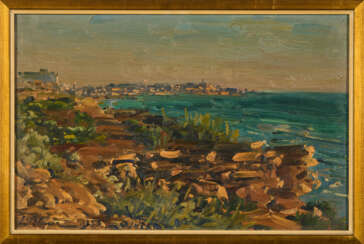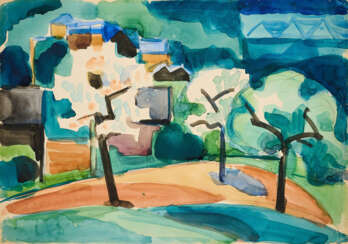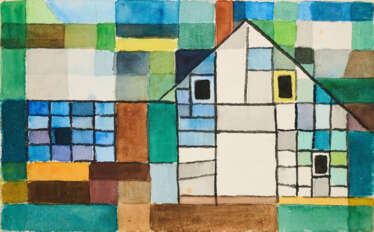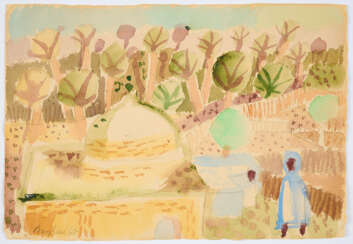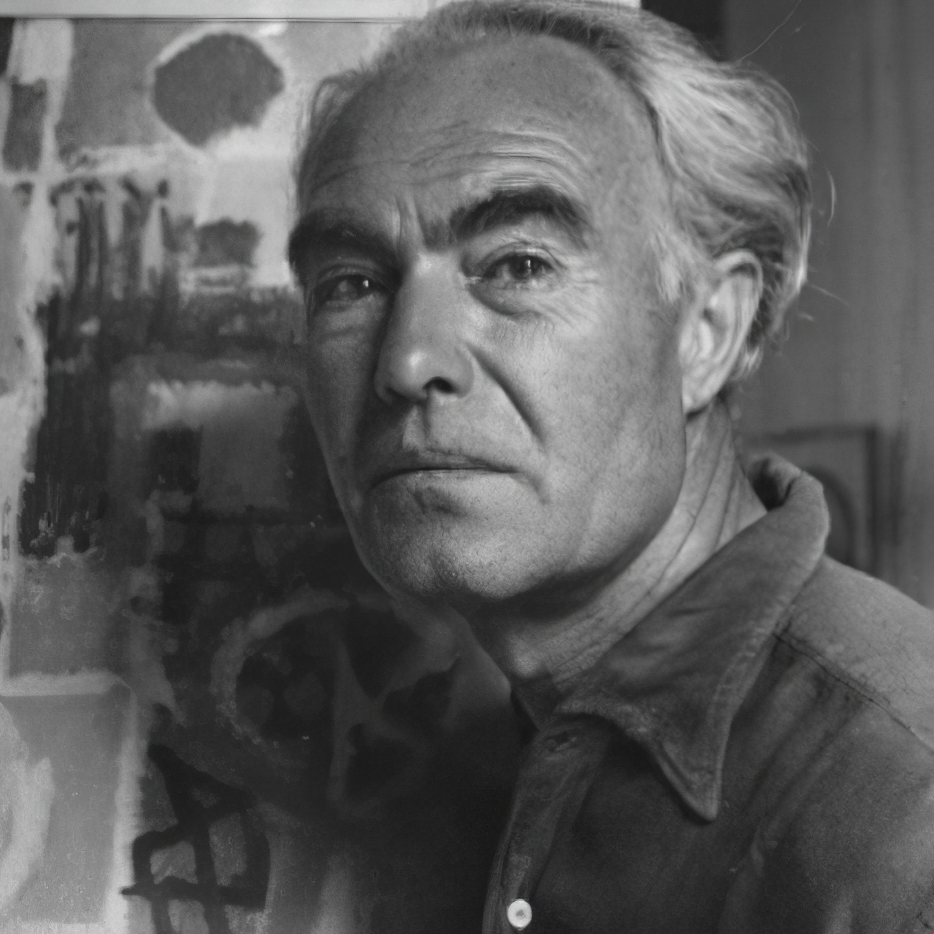
Modern Art — 1186. Auction ONLINE ONLY | Modern Art
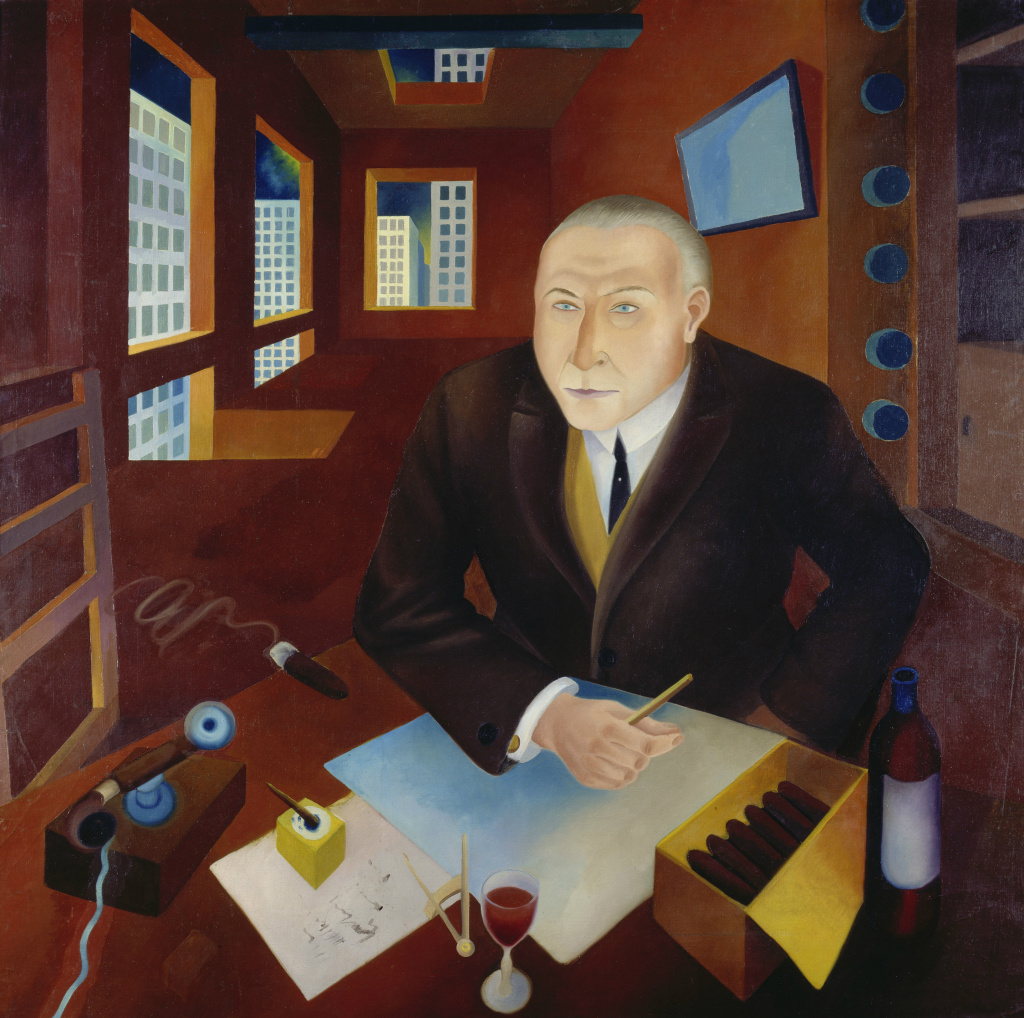
Heinrich Maria Davringhausen was a German painter associated with the New Objectivity. Davringhausen was born in Aachen. Mostly self-taught as a painter, he began as a sculptor, studying briefly at the Düsseldorf Academy of Arts before participating in a group exhibition at Alfred Flechtheim's gallery in 1914. He also traveled to Ascona with his friend the painter Carlo Mense that year. At this early stage his paintings were influenced by the expressionists, especially August Macke.
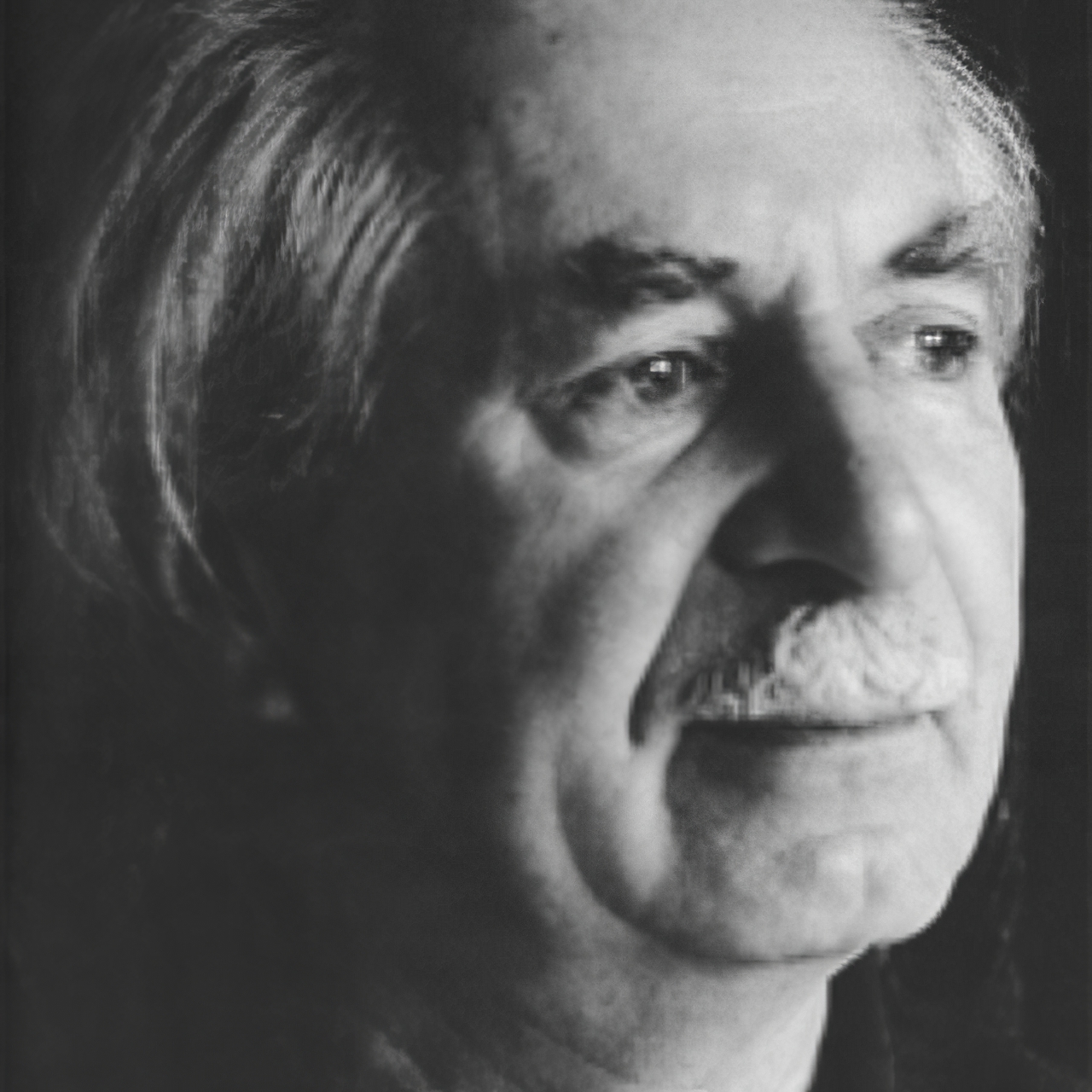
Thomas Ring was a German astrologer, painter and poet.
Thomas Ring studied in the class of the graphic artist Emil Orlik. He was intensively involved in the emerging expressionism and abstract painting.
As a 'degenerate painter' and (from 1927) a member of the Communist Party, he and his family emigrated to Austria at the end of 1932. In 1943 and 1944 he worked at the Institute of Psychology at the University of Strasbourg during the Second World War. After Strasbourg was liberated from the Nazis by the Allies, both he and his wife were imprisoned in a French prisoner-of-war camp.
After his liberation from the camp, Thomas Ring returned to Austria in 1946. In 1952 he settled in the countryside in the Black Forest, Germany.
He took part in three exhibitions (1961 in Berlin, 1971 and 1973 in Cologne), in which he was presented as a constructivist and a member of Der Strum. In 1974, Dumont Studio Cologne held a solo exhibition with forty-seven of his works.
Joseph Fernand Henri Léger was a French artist renowned for his innovative approach to Cubism and his transition towards a figurative, populist style. Born in Argentan, Orne, Lower Normandy, Léger's early career was marked by a stint as an architectural draftsman and a series of educational pursuits that eventually led him to Paris, where he embraced painting seriously. His artistic journey was significantly influenced by the bold abstractions of Cubism, characterized by geometric shapes and a vibrant palette, distinguishing his work from his contemporaries with what came to be known as "Tubism".
Léger's service in World War I profoundly impacted his artistic direction, leading him to adopt a 'mechanical' style that depicted the modern industrial world with sleek, tubular forms. This period saw creations like "Soldier with a Pipe" and "The Card Players," reflecting his war experiences and the mechanical aesthetics of the time. The post-war era encouraged Léger to explore the mechanical style further, evident in works like "The Bargeman" and "Mechanical Elements," highlighting the pace of technological advancement.
Throughout his career, Léger's work evolved, notably in the 1920s, where he aligned with Purist ideas, blending classicism with modernity. This phase is exemplified in "Woman with a Cat," showcasing a classical form with a modern, polished finish. By the 1930s, Léger's art took a more figurative, populist turn, aiming to democratize contemporary art and make it more accessible. His commitment to art education, especially for the common worker, underscored his belief in the social role of art.
For those intrigued by Joseph Fernand Henri Léger's groundbreaking contributions to modern art, his works can be found in prestigious museums worldwide. His legacy continues to inspire art collectors and enthusiasts alike. To stay updated on exhibitions and auction events featuring Léger's work, sign up for updates and embrace the unique opportunity to explore the richness of his artistic endeavors.
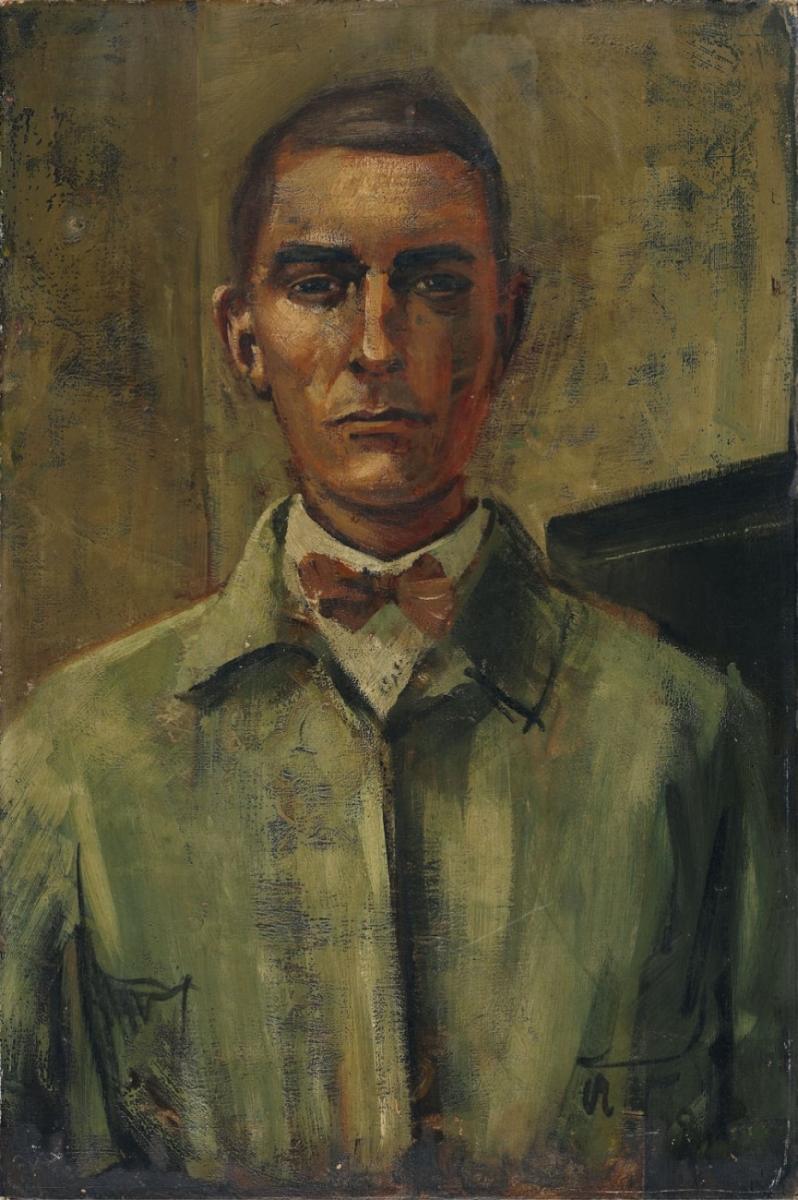
Anton Räderscheidt was a German painter who was a leading figure of the New Objectivity. Räderscheidt was born in Cologne. His father was a schoolmaster who also wrote poetry. From 1910 to 1914, Räderscheidt studied at the Academy of Düsseldorf. He was severely wounded in the First World War, during which he fought at Verdun. After the war he returned to Cologne, where in 1919 he cofounded the artists' group Stupid with other members of the local constructivist and Dada scene. The group was short-lived, as Räderscheidt was by 1920 abandoning constructivism for a magic realist style. In 1925 he participated in the Neue Sachlichkeit ("New Objectivity") exhibition at the Mannheim Kunsthalle.
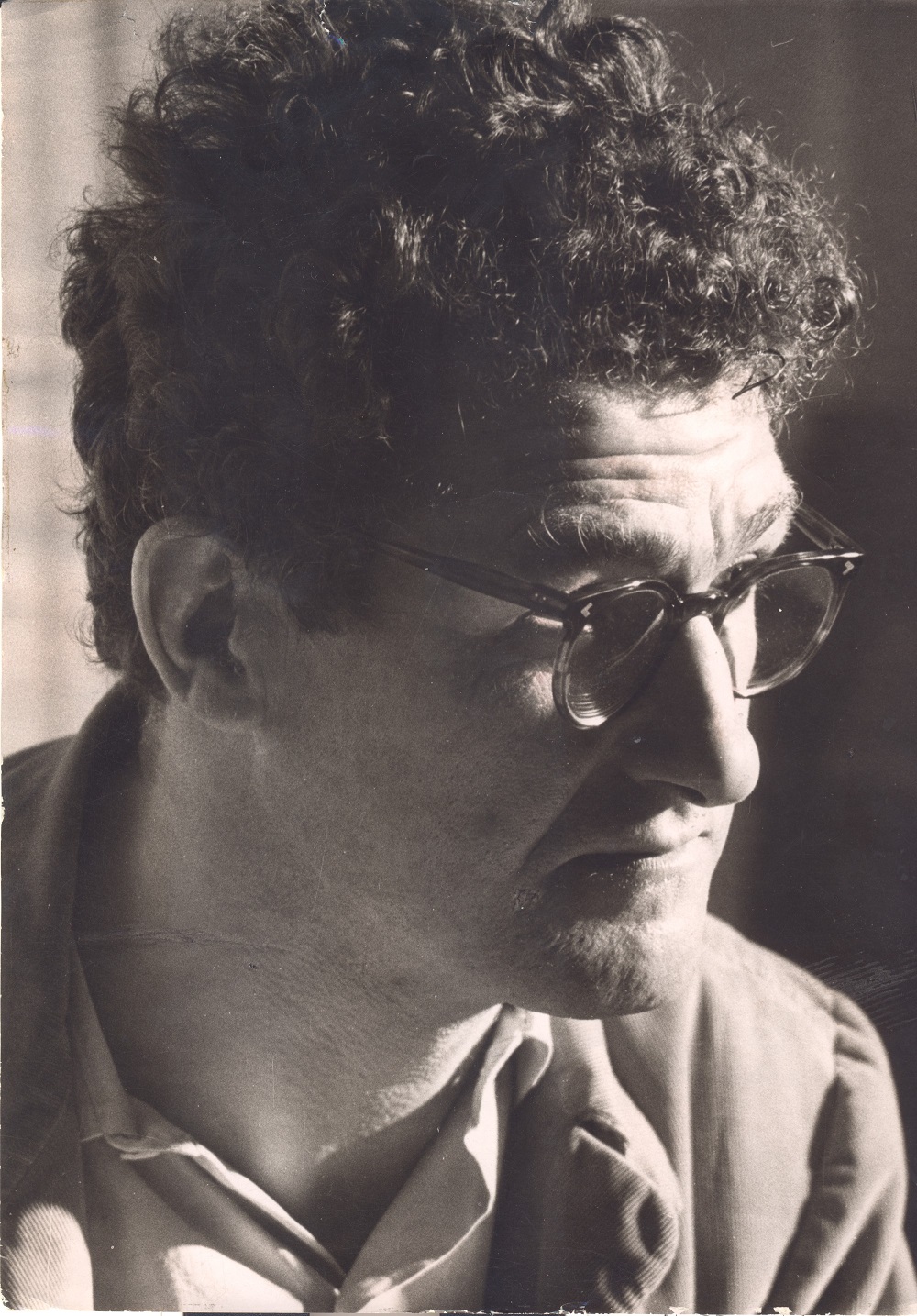
Edvard Frank was a German painter of the "lost generation".
He began his training in 1926 at the Trier School of Crafts and Applied Arts with August Trümper, then studied at the Cologne Werkschulen with Richard Seewald, and moved to the Academy in Berlin to study in Karl Hofer's class. After being called up for military service, he probably injured himself. At the end of the war he evaded another call-up by deserting. At the end of the war he lived in the district town of Birkenfeld in Hunsrück until the mid-1950s. Here he produced a large number of drawings and watercolours, which he was reluctant to give up. After the war he became a co-founder of the Palatinate Secession, and in 1946 a member of the New Darmstadt Secession as well as the Arbeitsgemeinschaft bildender Künstler am Mittelrhein, founded in 1948. He enjoyed increasing success with exhibitions at the Städtische Kunstsammlung Baden-Baden as well as in Hamburg, Lübeck, Berlin, Karlsruhe, Mannheim, Mainz and Kaiserslautern. The Brücke painter Erich Heckel appreciated his work. His estate, which includes personal documents and correspondence as well as sketchbooks and photographs of his works, is preserved in the Landesarchiv Saarbrücken.
Frank's preferred subjects were often erotic and oriented towards classicist motifs.
Edvard Frank was a member of the Deutscher Künstlerbund.
Translated with www.DeepL.com/Translator (free version)

Edvard Frank was a German painter of the "lost generation".
He began his training in 1926 at the Trier School of Crafts and Applied Arts with August Trümper, then studied at the Cologne Werkschulen with Richard Seewald, and moved to the Academy in Berlin to study in Karl Hofer's class. After being called up for military service, he probably injured himself. At the end of the war he evaded another call-up by deserting. At the end of the war he lived in the district town of Birkenfeld in Hunsrück until the mid-1950s. Here he produced a large number of drawings and watercolours, which he was reluctant to give up. After the war he became a co-founder of the Palatinate Secession, and in 1946 a member of the New Darmstadt Secession as well as the Arbeitsgemeinschaft bildender Künstler am Mittelrhein, founded in 1948. He enjoyed increasing success with exhibitions at the Städtische Kunstsammlung Baden-Baden as well as in Hamburg, Lübeck, Berlin, Karlsruhe, Mannheim, Mainz and Kaiserslautern. The Brücke painter Erich Heckel appreciated his work. His estate, which includes personal documents and correspondence as well as sketchbooks and photographs of his works, is preserved in the Landesarchiv Saarbrücken.
Frank's preferred subjects were often erotic and oriented towards classicist motifs.
Edvard Frank was a member of the Deutscher Künstlerbund.
Translated with www.DeepL.com/Translator (free version)

Edvard Frank was a German painter of the "lost generation".
He began his training in 1926 at the Trier School of Crafts and Applied Arts with August Trümper, then studied at the Cologne Werkschulen with Richard Seewald, and moved to the Academy in Berlin to study in Karl Hofer's class. After being called up for military service, he probably injured himself. At the end of the war he evaded another call-up by deserting. At the end of the war he lived in the district town of Birkenfeld in Hunsrück until the mid-1950s. Here he produced a large number of drawings and watercolours, which he was reluctant to give up. After the war he became a co-founder of the Palatinate Secession, and in 1946 a member of the New Darmstadt Secession as well as the Arbeitsgemeinschaft bildender Künstler am Mittelrhein, founded in 1948. He enjoyed increasing success with exhibitions at the Städtische Kunstsammlung Baden-Baden as well as in Hamburg, Lübeck, Berlin, Karlsruhe, Mannheim, Mainz and Kaiserslautern. The Brücke painter Erich Heckel appreciated his work. His estate, which includes personal documents and correspondence as well as sketchbooks and photographs of his works, is preserved in the Landesarchiv Saarbrücken.
Frank's preferred subjects were often erotic and oriented towards classicist motifs.
Edvard Frank was a member of the Deutscher Künstlerbund.
Translated with www.DeepL.com/Translator (free version)

Edvard Frank was a German painter of the "lost generation".
He began his training in 1926 at the Trier School of Crafts and Applied Arts with August Trümper, then studied at the Cologne Werkschulen with Richard Seewald, and moved to the Academy in Berlin to study in Karl Hofer's class. After being called up for military service, he probably injured himself. At the end of the war he evaded another call-up by deserting. At the end of the war he lived in the district town of Birkenfeld in Hunsrück until the mid-1950s. Here he produced a large number of drawings and watercolours, which he was reluctant to give up. After the war he became a co-founder of the Palatinate Secession, and in 1946 a member of the New Darmstadt Secession as well as the Arbeitsgemeinschaft bildender Künstler am Mittelrhein, founded in 1948. He enjoyed increasing success with exhibitions at the Städtische Kunstsammlung Baden-Baden as well as in Hamburg, Lübeck, Berlin, Karlsruhe, Mannheim, Mainz and Kaiserslautern. The Brücke painter Erich Heckel appreciated his work. His estate, which includes personal documents and correspondence as well as sketchbooks and photographs of his works, is preserved in the Landesarchiv Saarbrücken.
Frank's preferred subjects were often erotic and oriented towards classicist motifs.
Edvard Frank was a member of the Deutscher Künstlerbund.
Translated with www.DeepL.com/Translator (free version)
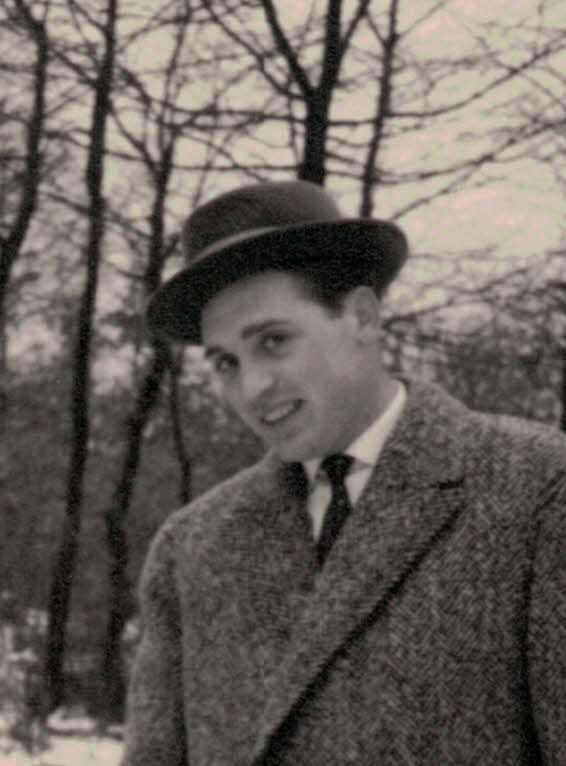
Adolf Hartmann was a German painter. On October 29, 1918, at the age of 18, he began his studies at the Academy of Fine Arts in Munich with Angelo Jank and later continued at the Academy of Fine Arts in Berlin with Gustav Boese. From 1924 Hartmann worked as a freelance artist. His exhibition activity began as early as 1919, when he took part in an exhibition in the Glass Palace in Munich, where he has exhibited regularly ever since. Adolf Hartmann was a professor at the Academy of Fine Arts in Berlin from 1948 to 1962. Hartmann was a member of numerous artist associations, e.g. of the New Group, of which he was also President for a time. Adolf Hartmann was a member of the Munich Secession and the jury-free as well as an honorary member of the Rhenish Secession.

Adolf Hartmann was a German painter. On October 29, 1918, at the age of 18, he began his studies at the Academy of Fine Arts in Munich with Angelo Jank and later continued at the Academy of Fine Arts in Berlin with Gustav Boese. From 1924 Hartmann worked as a freelance artist. His exhibition activity began as early as 1919, when he took part in an exhibition in the Glass Palace in Munich, where he has exhibited regularly ever since. Adolf Hartmann was a professor at the Academy of Fine Arts in Berlin from 1948 to 1962. Hartmann was a member of numerous artist associations, e.g. of the New Group, of which he was also President for a time. Adolf Hartmann was a member of the Munich Secession and the jury-free as well as an honorary member of the Rhenish Secession.

Adolf Hartmann was a German painter. On October 29, 1918, at the age of 18, he began his studies at the Academy of Fine Arts in Munich with Angelo Jank and later continued at the Academy of Fine Arts in Berlin with Gustav Boese. From 1924 Hartmann worked as a freelance artist. His exhibition activity began as early as 1919, when he took part in an exhibition in the Glass Palace in Munich, where he has exhibited regularly ever since. Adolf Hartmann was a professor at the Academy of Fine Arts in Berlin from 1948 to 1962. Hartmann was a member of numerous artist associations, e.g. of the New Group, of which he was also President for a time. Adolf Hartmann was a member of the Munich Secession and the jury-free as well as an honorary member of the Rhenish Secession.
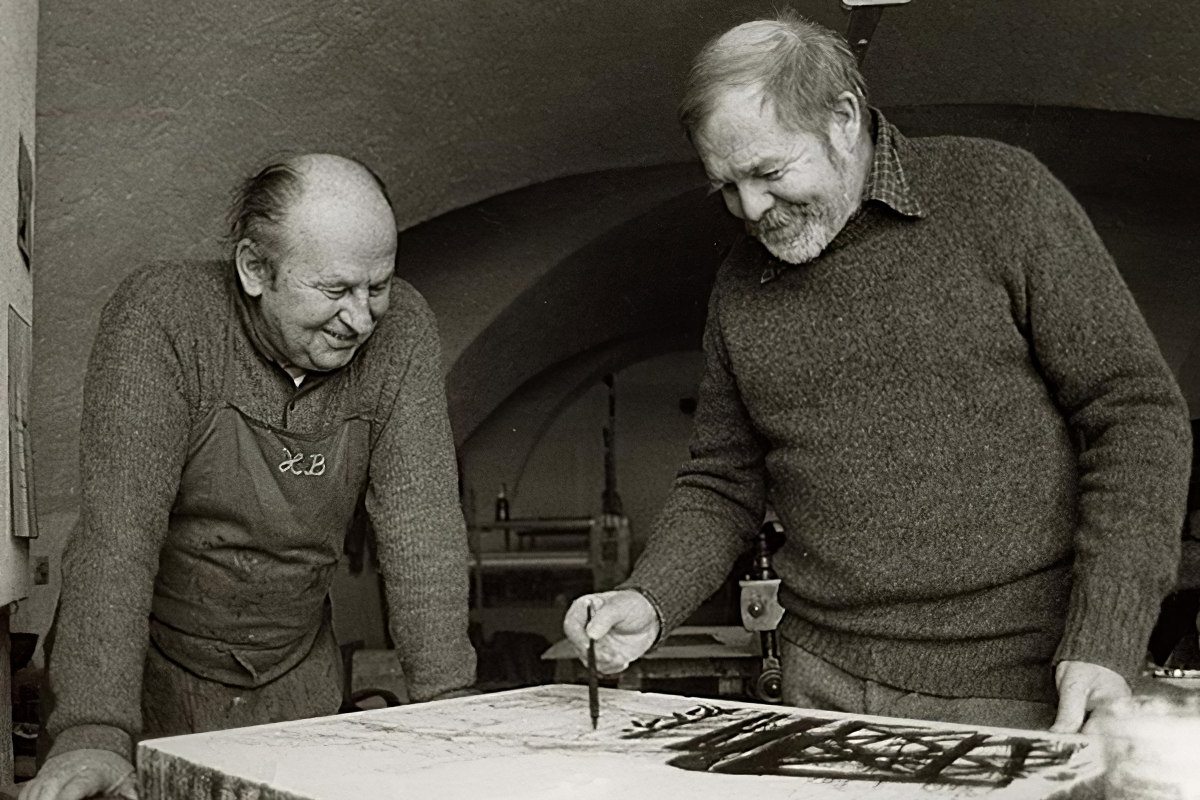
Herbert Breiter was a German-born Austrian painter and lithographer. He is known, in particular, for his landscape paintings, his "atmospheric scenes" and for the many views of Salzburg, his adopted home city, that he produced. His surviving output also includes still lifes and portraits.
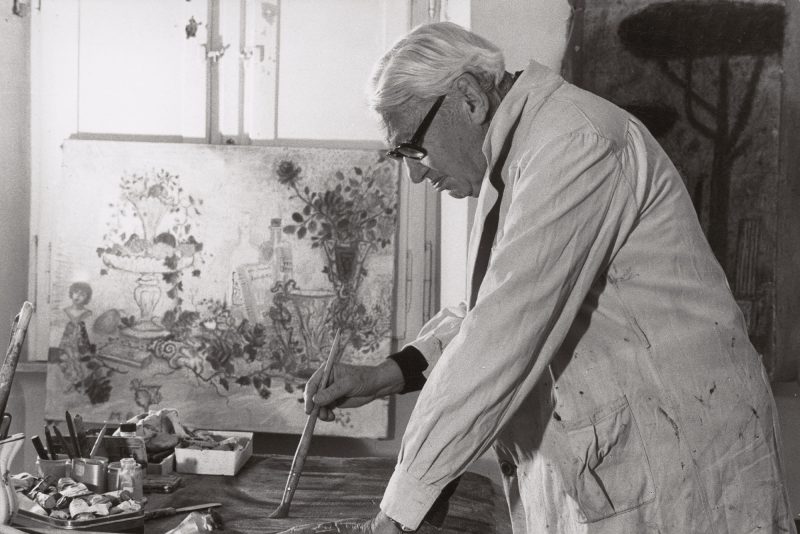
Max Peiffer Watenphul was a German artist. Described as a "lyric poet of painting", he belongs to a "tradition of German painters for whom the Italian landscape represented Arcadia." In addition to Mediterranean scenes, he regularly depicted Salzburg and painted many still lifes of flowers. As well as oil paintings, his extensive body of work encompasses watercolours, drawings, enamel, textiles, graphic art, and photographs.
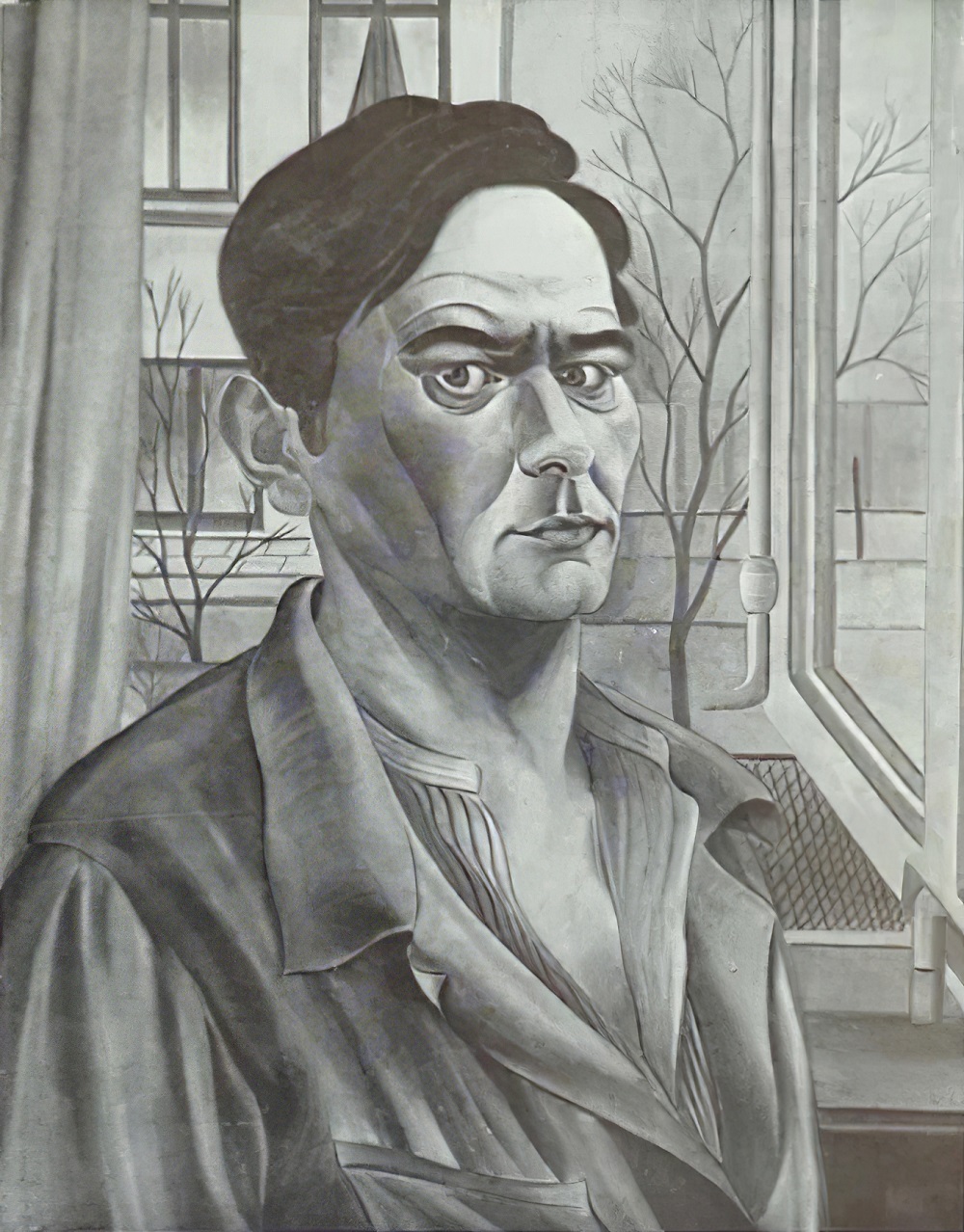
Christian Arnold was a German painter and graphic artist. He is best known for his landscape paintings that often depicted the rural and coastal regions of northern Germany.
Arnold studied at the Academy of Fine Arts in Munich and later taught at the School of Arts and Crafts in Bremen. His work was heavily influenced by the German Expressionist movement, and he often used bold colors and thick brushstrokes to create a sense of emotional intensity in his paintings.
In addition to his landscapes, Arnold also produced numerous portraits, still lifes, and religious works. He worked in a variety of mediums, including oil paints, watercolors, and printmaking.
Arnold's work was exhibited widely during his lifetime, and he received numerous awards and honors for his contributions to the arts. Today, his paintings are held in collections around the world, including the National Gallery in Berlin and the Kunsthalle Bremen.
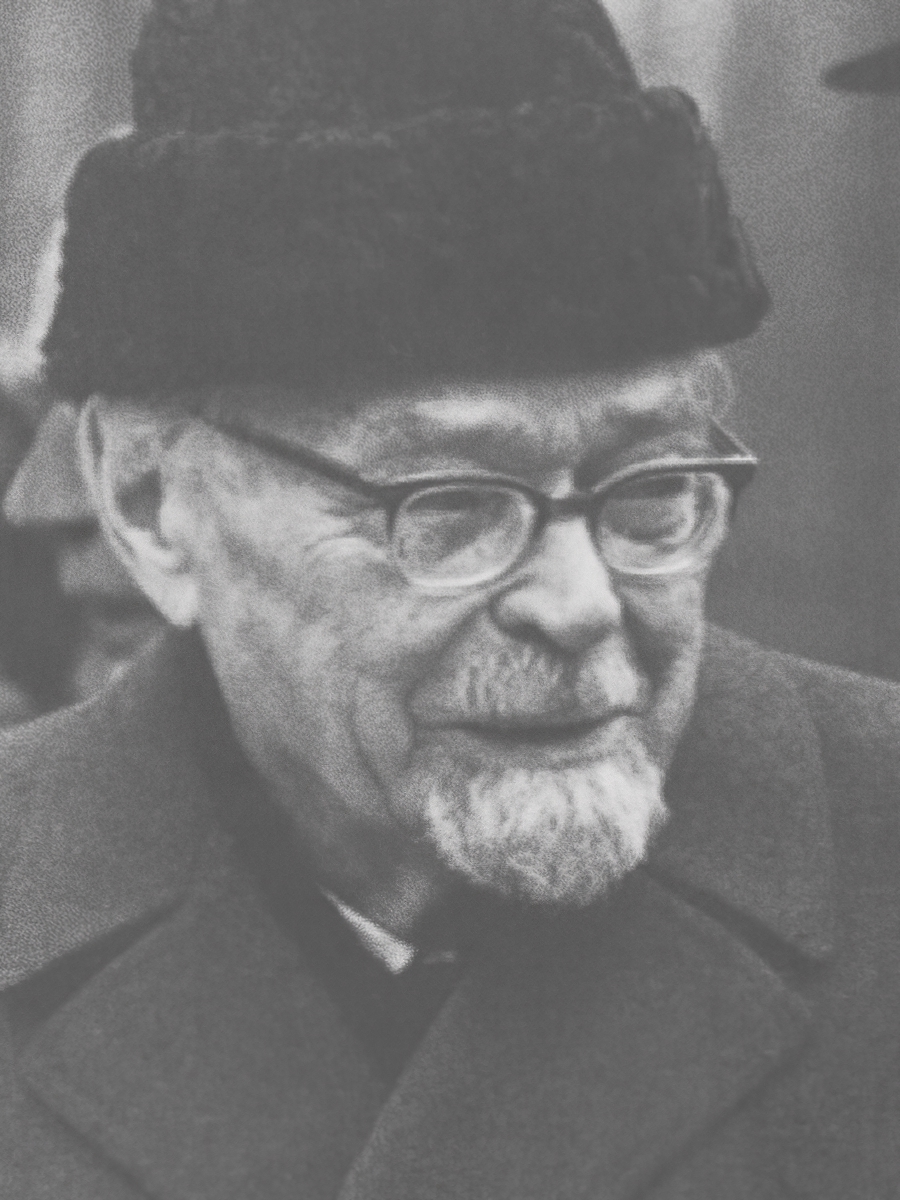
Karl Schmidt-Rottluff, a prominent figure in the German Expressionist movement, was not just an artist but a pioneer who significantly influenced the early 20th-century art scene. Born in Rottluff, Germany, in 1884, he later added his hometown's name to his surname, showcasing a deep connection to his roots. Schmidt-Rottluff was a founding member of the artist group Die Brücke, which played a critical role in the development of Expressionism in Germany. His works, characterized by bold colors and stark contrasts, were a departure from traditional artistic expressions and embraced a more emotional and subjective interpretation of reality.
Schmidt-Rottluff's contributions to art were not limited to painting; he was also a master printmaker, with a significant body of work comprising woodcuts, lithographs, and etchings. His artistic endeavors were marked by a fascination with the natural world, social issues, and an exploration of human emotion, themes that remained consistent throughout his career. Despite facing persecution during the Nazi regime, with many of his works labeled as "degenerate," Schmidt-Rottluff's resolve did not waver. In 1937, 608 of his paintings were seized, and by 1941, he was forbidden to paint. Yet, his legacy continued to grow post-World War II, and he was later honored with professorship at the University of Arts in Berlin-Charlottenburg in 1947, where he influenced a new generation of artists.
The value and impact of Schmidt-Rottluff's work are reflected in the presence of his pieces in prestigious collections worldwide, including the Museum of Modern Art, Neue Galerie, Los Angeles County Museum of Art, and many others. His works are celebrated for their emotional depth, innovative use of color, and ability to convey complex themes through simplified forms. Notably, some of his significant pieces have been subjects of restitution efforts, highlighting the historical importance and continued relevance of his work in the context of art history and cultural heritage.
For collectors and experts in art and antiques, Schmidt-Rottluff's oeuvre offers a profound insight into the evolution of Expressionism and the broader cultural and political narratives of the early 20th century. His works not only serve as a testament to his individual genius but also as a reflection of the tumultuous era that shaped them.
To stay informed about new discoveries, sales, and auction events related to Karl Schmidt-Rottluff's work, signing up for updates is highly recommended. This ensures that enthusiasts and collectors alike are always in the loop regarding opportunities to engage with and acquire pieces by this influential artist, ensuring his legacy continues to inspire and resonate with future generations.

Karl Schmidt-Rottluff, a prominent figure in the German Expressionist movement, was not just an artist but a pioneer who significantly influenced the early 20th-century art scene. Born in Rottluff, Germany, in 1884, he later added his hometown's name to his surname, showcasing a deep connection to his roots. Schmidt-Rottluff was a founding member of the artist group Die Brücke, which played a critical role in the development of Expressionism in Germany. His works, characterized by bold colors and stark contrasts, were a departure from traditional artistic expressions and embraced a more emotional and subjective interpretation of reality.
Schmidt-Rottluff's contributions to art were not limited to painting; he was also a master printmaker, with a significant body of work comprising woodcuts, lithographs, and etchings. His artistic endeavors were marked by a fascination with the natural world, social issues, and an exploration of human emotion, themes that remained consistent throughout his career. Despite facing persecution during the Nazi regime, with many of his works labeled as "degenerate," Schmidt-Rottluff's resolve did not waver. In 1937, 608 of his paintings were seized, and by 1941, he was forbidden to paint. Yet, his legacy continued to grow post-World War II, and he was later honored with professorship at the University of Arts in Berlin-Charlottenburg in 1947, where he influenced a new generation of artists.
The value and impact of Schmidt-Rottluff's work are reflected in the presence of his pieces in prestigious collections worldwide, including the Museum of Modern Art, Neue Galerie, Los Angeles County Museum of Art, and many others. His works are celebrated for their emotional depth, innovative use of color, and ability to convey complex themes through simplified forms. Notably, some of his significant pieces have been subjects of restitution efforts, highlighting the historical importance and continued relevance of his work in the context of art history and cultural heritage.
For collectors and experts in art and antiques, Schmidt-Rottluff's oeuvre offers a profound insight into the evolution of Expressionism and the broader cultural and political narratives of the early 20th century. His works not only serve as a testament to his individual genius but also as a reflection of the tumultuous era that shaped them.
To stay informed about new discoveries, sales, and auction events related to Karl Schmidt-Rottluff's work, signing up for updates is highly recommended. This ensures that enthusiasts and collectors alike are always in the loop regarding opportunities to engage with and acquire pieces by this influential artist, ensuring his legacy continues to inspire and resonate with future generations.
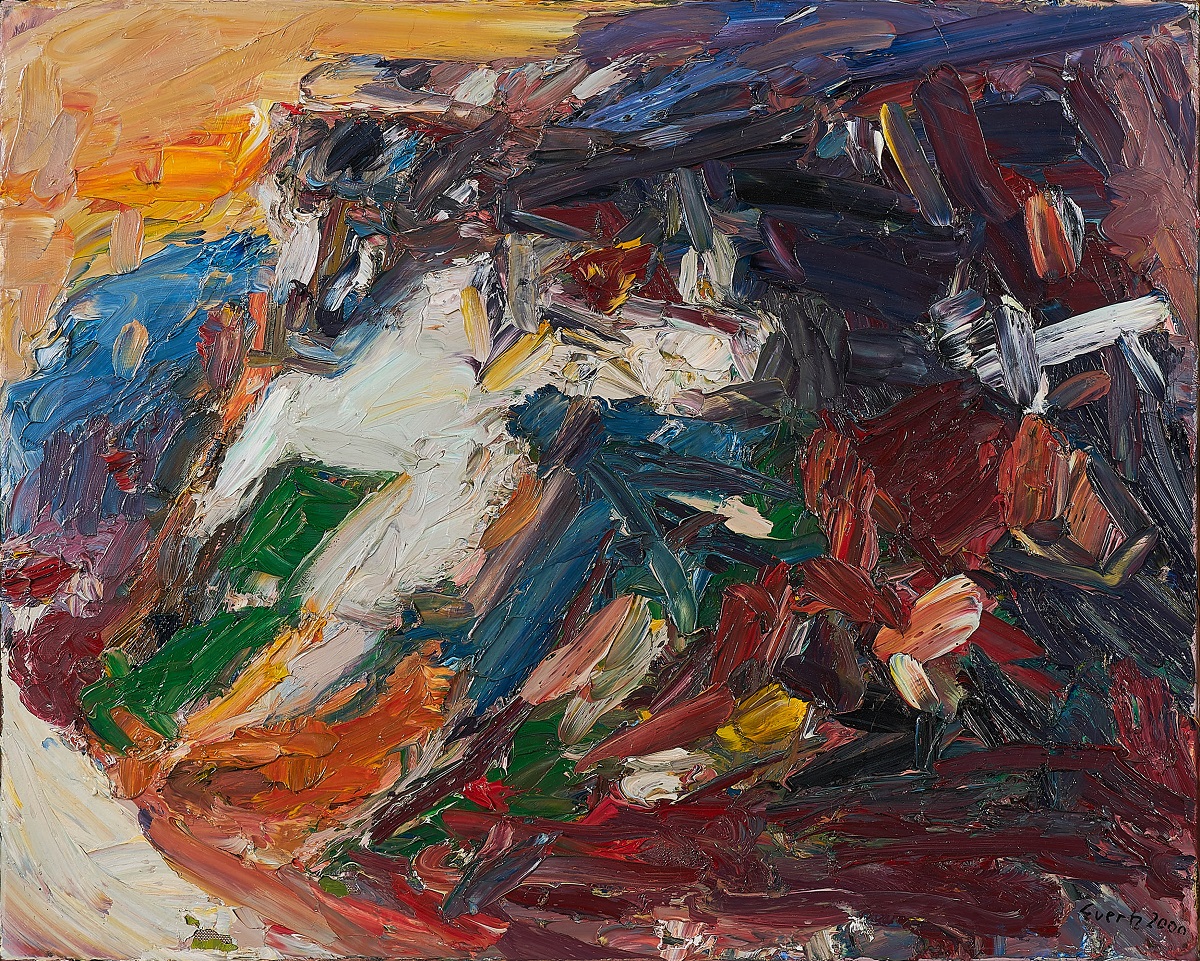
Günter Evertz is a German visual artist.
Günter Evertz has studied art history and nudes at the School of Art in Berlin since 1978. He was a master student under Prof. Georg Baselitz.
From 1993 to 1997 was visiting professor of painting at the Humboldt University.
